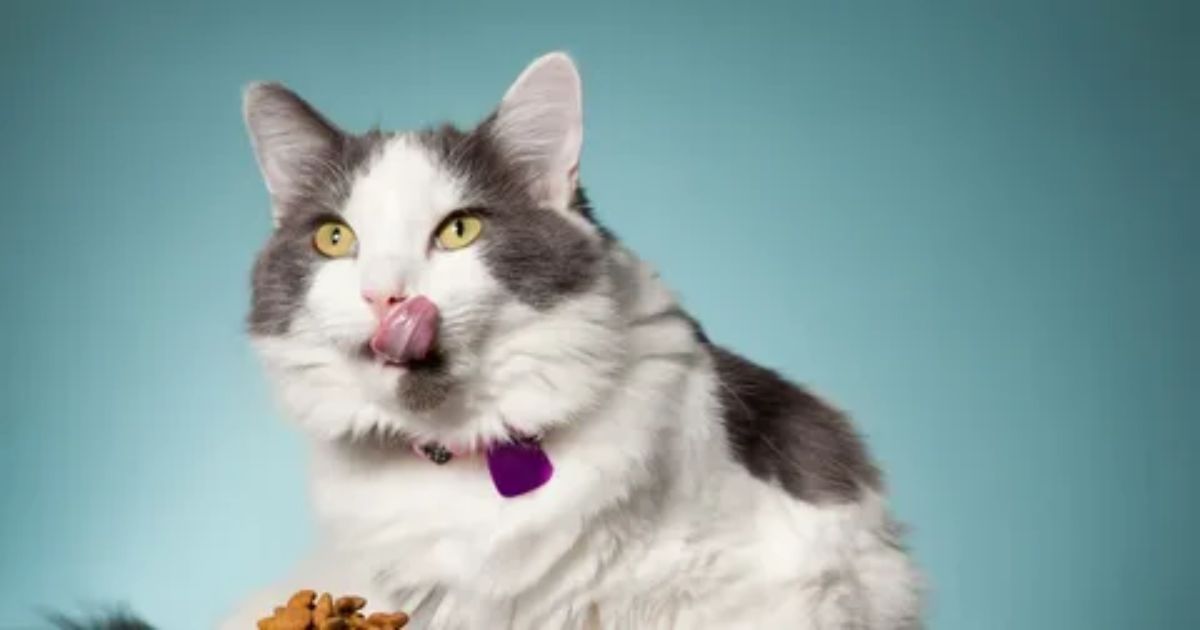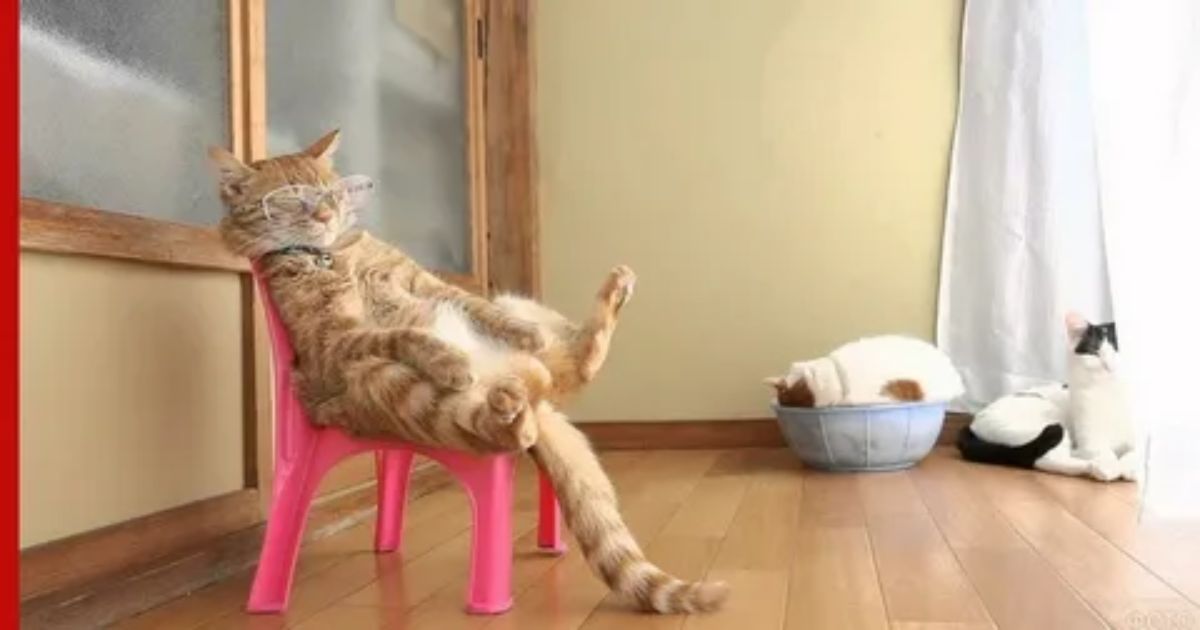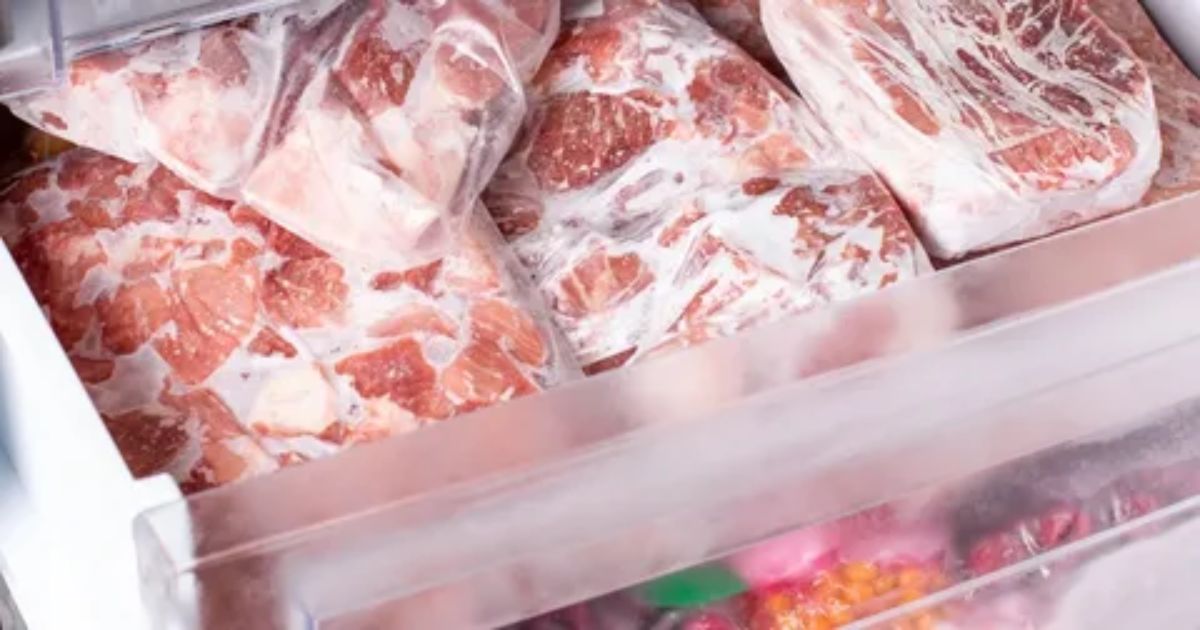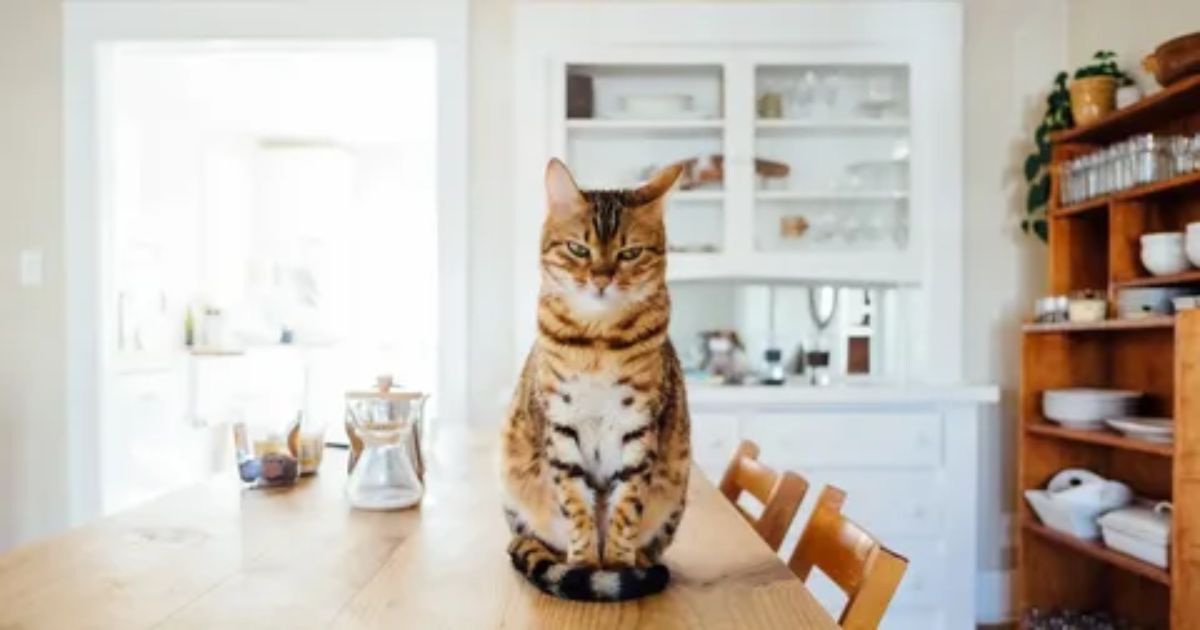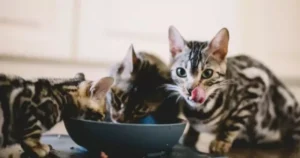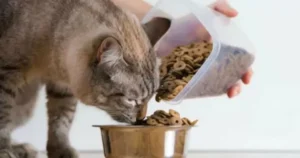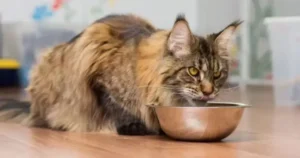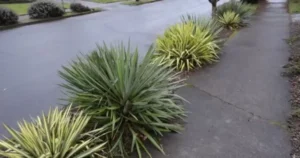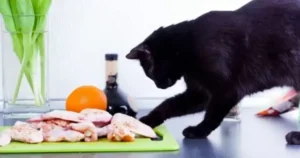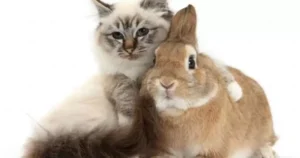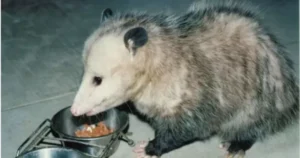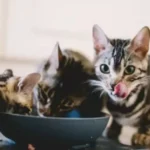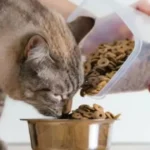The abnormal conduct of cats scratching and digging at the ground around their meal bowls puzzles many cat proprietors. This instinctive habit stems from cats’ evolutionary history as solitary hunters needing to hide leftover food from potential competitors. Even well-fed house cats exhibit “food burial” out of an inborn impulse to cache meals.
Cats do funny things with their food. They scratch the floor around their bowl. It looks like they are trying to bury their food. Why do cats try to bury their food? It’s because of old instincts. Long ago, wild cats had to hide their leftover meals. House cats still feel the need to act this way.
The food burial impulse emerges early, with kittens hiding snacks from littermates. Adult cats continue the pattern out of ancient instinct. So while cats’ burying and hiding food seems eccentric, it reflects their historic need to conceal food for lean times. This innate habit persists even in pampered pet cats with a reliable food supply, evidence of cats’ enduring connection to their wild forebears.
Evolutionary Instinct of Wild Felines
Cats descend from solitary hunters. Wild cats must catch their prey. They do not scavenge food. When wild cats make a kill, they do not eat it all at once. They bury leftovers to save for later. This protects the food from other animals who might steal it. House cats retain this instinct from their wild ancestors.
Even indoor cats exhibit the food burial impulse. It comes from ancient evolutionary programming. All felines share this drive to cache food, passed down over eons. Modern pet cats still act on old impulses to conceal meals, though well fed.
Hiding Leftover Kills from Competitors
When wild felines hunt, they cannot eat an entire carcass right away. Other predators compete for leftover meat. Burying leftovers hides the scent. It prevents rivals like coyotes from finding the remains and stealing them.
For stray and feral cats, protecting an unfinished meal can mean the difference between eating again or starving. So cats scratch earth over leftovers to shield them from thieves until the cat returns. Well-fed house cats mimic this deep-seated survival strategy.
Preserving Meals for Future Consumption
Wild cats cache leftovers to extend the life of a fresh kill. Scratching dirt or debris over meat prevents it from spoiling quickly. This preserves the food longer for the cat to come back and eat later when hungry again.
Burying also protects uncovered meat from flies and microbes that would rot it faster. A buried carcass stays fresher and safer for the cat to return to when needing another meal. Domestic cats inherited this impulse to keep food longer via simulated burial.
An Inborn and Impulsive Feline Behavior
For cats, trying to bury food is not a learned habit. Kittens separated from their mothers at birth still exhibit food-hiding behaviors. The urge emerges even without being taught by adult cats.
So the tendency to scrape and scratch around food bowls is an innate, automatic feline behavior. It comes from primal evolutionary programming imprinted into all cats’ genes and brains. Domestic cats follow inborn impulses to act out their wild instinct to conceal food.
Kittens Learn Food Hiding From Mothers
Kittens first observe the head-scratching food burial motions from their mothers. They mimic mom cats covering leftovers after early weaning. Kittens also begin hiding food from each other, keeping snacks safe from litter mates.
As adults, cats repeat these kittenhood rituals around food bowls. The ways kittens start burying food young continues through adulthood out of lifelong habit. Early learned behaviors from mom become ingrained when cats mature and stay with them for life.
Stress Between Household Cats Triggers It
When multiple cats share a home, it can create social stress between them. Even cats that get along still compete for resources like food, water bowls, beds, and human attention.
These resource conflicts can stimulate the ancient food burial drive. Cats may try to hide or hoard food from other household cats. Digging and covering motions attempt to conceal the food’s location and scent from potential feline rivals.
Rituals Reenacting Ancestral Necessities
| Idea | Explanation |
| Pet cats don’t need to bury food | Their homes provide food security |
| But they still do it | It’s an obsolete instinct |
| It’s from ancestral behaviors | Wild cats hide food to survive |
| House cats inherit the ritual | Genes compel them to act out |
| They mimic obsolete impulses | That helped ancient cats live |
| It’s replaying old survival behaviors | No longer needed for modern pets |
Pet cats have no logical need to bury food in their safe, comfortable homes. Yet the instinctive ritual persists because it gets encoded into feline muscle memory over generations.
Domestic cats perform ancestral rituals like pretend burying as outlets for obsolete impulses. Their genes compel them to act out obsolete behaviors that once filled critical survival needs for wild forebears. Modern cats replay vestigial ceremonials handed down by ancient cats.
Caching Food for Lean Times Still Intuitive
For pet cats, simulated burying and hiding food around the home seems nonsensical. But evolutionary programming in their brains still expects lean times between steady meals.
So caching remains an unconscious strategy cats use to stockpile for imagined food scarcity. Their genes assume scarcer meals and longer hunting intervals, even if bowls stay full. Burying satisfies intuitive worries about future hunger passed on through history.
Imaginary Burying and Uncovering of Bowls
Cats often go through elaborate pretend burial rituals around their food, a behavior known as ‘bury their food.’ They might scratch vigorously at the floor by the bowl as if flinging an imaginary substrate over it. Some cats even carry objects like towels to blanket the bowl, further demonstrating this instinctual food-burying behavior.
Later, cats may paw, dig, and nose around the space where they “buried” it. Uncovering nothing but the untouched bowl. This instinctive pantomime of caching and unearthing food perplexes many owners. But it shows cats following the scripted behaviors of wild felines.
Keeping Meat Safe from Scavengers and Spoiling
When wild cats scratch dirt and debris over leftovers, they aim to conceal the meat from scavengers who would steal it. Burying also protects remains from quick spoilage in the open air, preserving the food longer.
House cats don’t face these threats to food. Yet their genes still generate innate worries that drive mock burial rituals. They are responding to ancient risks of rot and theft that evolution programmed cats to avoid via covering kills.
Establishing Ownership Over Valuable Resources
Stray cats bury food to declare ownership over it. Uncovered food in communal areas gets seen as up for grabs. By covering or hiding food, cats stake a claim saying “This meal belongs to me.”
Indoor cats show similar possessive behavior around bowls. Scratching and scattering food, hiding it in private corners, shows cats still worry about owning meals. Even well-fed housecats bury to assert their proprietary right over the valuable resource.
Scent Hiding from Rival Cats and Predators
Wild cats bury leftovers to mask the smell of other animals. Feline competitors and predators cue in on uncovered meat’s scent. So burial hides the aroma that might lure hungry rivals. It also keeps predators that hunt cats, like coyotes, from sniffing out the cat guarding the cache.
Burying food, real or pretend, helps cats feel less exposed. Their evolutionary past makes cats feel unsafe with food smelling openly. So even indoor cats try to cloak food’s fragrance by going through burial motions.
Domestic Surrogates for Wild Survival Behaviors
Scratching and scattering dry kibble around the kitchen might seem nutty to owners. But these are surrogate activities substituting for authentic survival behaviors of old. Ancestral cat’s power had to find clever ways to preserve meat and hide it safely from thieves.
Today’s pampered housecats no longer face such dire threats to food security. Yet their wild instinct still seeks outlets. So they transform bowls and kibble into pretend stand-ins to exercise ancient impulses once critical to feline survival.
Exaggerated Outlets for Innate Impulses
Feline instincts around food often look oddly excessive in modern settings. But cats have strong evolutionary programming embedded to guard and preserve meals. When indoor conditions don’t challenge those instincts enough, odd behaviors can result.
In the wild, food burial serves meaningful functions. But safe, comfortable houses don’t stimulate cats’ instincts fully. So behaviors like persistent, lengthy burying around bowls manifest as exaggerated outlets. These release and satisfy powerful innate drives written into cats’ genes.
Quirky Cat Conduct Confusing Owners
Many cat owners struggle to understand finicky feline food behaviors. But cats follow strict evolutionary dictates around eating, not human ideas of normal behavior. Their ancestral programming compels them to relate to food in unique feline ways.
Weird rituals like burying dry food, hiding wet morsels, and even pushing full bowls into toilet bowls can bewilder cat parents. But these quirky cat conducts come from cats’ ancient obsession with preserving scarce, hard-won meals to guarantee survival. This behavior is not exclusive to adult cats; even kittens eat cat food in peculiar ways, reflecting their instinctual need to secure and protect their food sources.
FAQS:
1. What does it mean when my cat tries to bury its food?
Cats instinctively try to bury food to save it for later even when not hungry due to ancestral programming.
2. Why does my cat scratch the floor after eating?
Scratching the floor after eating is an innate ritual cats perform to pretend to cover up food remains even when not needed.
3. Why do cats try to bury things that aren’t there?
Burying imaginary items stems from a built-in compulsion to go through ancestral food-hiding motions no longer necessary for survival.
4. Why does my cat put his food on the ground?
Putting food on the ground allows cats to use substitution activities to act out obsolete impulses to cache meals for future hunger.
Conclusion
Burying food is an innate behavior for cats. It comes from their wild ancestors. Wild cats had to hunt for all their food. When they made a kill, they ate some of it. Then they buried the rest to save it. This kept the leftover meat safe and fresh. House cats still have this instinct today.
“Even indoor pet cats want to bury their bowl food. They scratch and dig at the floor around their dish. Sometimes they try to cover the food with other things like paper or fabric. This behavior, where cats bury their food, can look strange to us. But it’s normal for cats. Burying food is built into their nature for survival purposes.”
